What Is Soil Nailing Technique? Common Types and Applications of Soil Nails
Time:2023-12-13From:sinorock View:
I. Introduction to Soil Nailing Technique
A. Definition and Basic Concept
Soil nailing technique stands tall as a pioneering slope reinforcement construction method, utilizing in-situ soil reinforcement to enhance stability. The core concept involves inserting slender rebars into the soil, laying reinforcing mesh on the slope surface, and applying concrete to form a composite body. This structure, akin to a gravity retaining wall, securely bonds reinforced rods with the surrounding soil.

B. Importance and Benefits of Soil Nailing
The significance of soil nailing lies in its ability to prevent the collapse and displacement of foundations or slopes. Further highlighting its importance are its applications in slope stabilization, foundation excavation, and retaining wall reinforcement.
The benefits of soil nailing range from cost-effectiveness and time efficiency to versatility in various soil conditions, all with minimal disruption to surrounding structures. Cause it is a very versatile process. With soil nails, curves and surfaces can be shored easily, and installation methods can be modified to meet access restrictions. Soil nailing is more feasible and more economical than driven piles for shoring walls above about 10 feet. Compared to driving piles, it is also quieter. The footprint of soil nailing is significantly smaller than that of laying back a slope when space for shoring is limited, especially for tall retaining structures.
II. Common Types of Soil Nails
A. Self-drilling Soil Nail
1. Definition and Characteristics
Self-drilling soil nails employ a self-drilling hollow anchor bolt, suitable for loose geological conditions where forming holes is challenging. The use of hollow bars and simultaneous drilling and grouting speeds up the process, providing enhanced corrosion resistance compared to driven nails.
2. Installation Process and Materials Used
The installation involves drilling into the slope surface, injecting grout during the process, and offering corrosion-resistant properties to the nails. The use of self-drilling anchor bolts combines drilling, grouting, and anchoring, providing practical, safe, and economical solutions.
B. Drilled and Grouted Soil Nailing
1. Definition and Characteristics
Drilled and grouted soil nails involve drilling holes into the soil with equipment such as drilling rigs and subsequently placing rods into these holes, injecting cement slurry. These nails are versatile, with high pullout resistance, reliable quality, and cost-effectiveness.
2. Installation Process and Materials Used
The process includes drilling holes in walls or slope faces, inserting nails into pre-drilled holes, and filling the holes with grouting materials such as concrete. The diameter of these nails ranges from 100-200mm, with a spacing of 1.5m.
C. Driven Soil Nailing
1. Definition and Characteristics
Driven soil nails employ various materials like steel pipes, angle steels, or logs driven directly into the soil without grouting. While fast in construction and suitable for temporary stabilization of soil slopes, they face challenges in hard cohesive soil and have limitations on service life.
2. Installation Process and Materials Used
Driven soil nailing involves driving nails into the slope face during excavation, with small diameters ranging from 19mm to 25mm and spacings of 1m to 1.2m. Despite its speed, this method does not provide corrosion protection to the reinforcement steel.
D. Grouting Steel Floral Tube
1. Definition and Characteristics
Grouting steel floral tubes involve setting grouting holes in the middle and tail of a steel pipe, forming a tube directly driven into the soil. This method is particularly suitable for soft soil layers and offers high pull-out resistance.
2. Installation Process and Materials Used
The process includes driving the steel floral tube into the soil and subsequent grouting to form soil nails. While this method provides high pull-out resistance, it is not cost-effective for projects requiring long-term anti-corrosion performance.
III. Applications of Soil Nails
A. Slope Stabilization
Slope stability is a critical concern in civil engineering projects, where factors like soil type, water content, and external loads contribute to instability.
Soil nailing mitigates slope instability by reinforcing the soil, preventing collapse, and enhancing overall slope stability.

B. Retaining Wall Construction
Retaining walls are structures designed to hold back soil and prevent erosion, commonly used in hilly terrain or areas with elevation changes.
Retaining walls rely heavily on soil nails to reinforce and stabilize them to ensure their durability and structural integrity.

C. Tunneling and Underground Excavations
Tunneling and underground excavations encounter challenges such as ground movement, soil collapse, and the need for stable support.
Soil nails could provide crucial ground support in tunneling and underground excavations, reducing the risk of collapses and ensuring the safety of structures above.
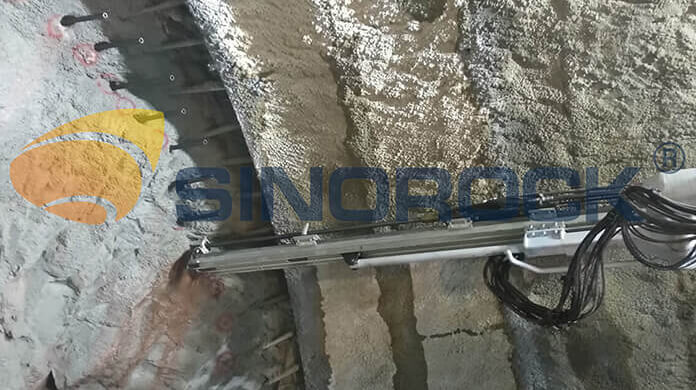
IV. Advantages and Limitations of Soil Nailing Technique
A. Advantages of Soil Nailing
1. Cost-effectiveness and Time Efficiency
Soil nailing proves to be a cost-effective and time-efficient solution, reducing construction periods and associated expenses.
2. Versatility in Various Soil Conditions
The technique exhibits versatility, adapting to different soil conditions, making it applicable in a wide range of geological settings.
3. Minimal Disruption to Surrounding Structures
Soil nailing minimizes disruption to surrounding structures, making it a preferred choice in urban environments and areas with existing infrastructure.
B. Limitations of Soil Nailing
1. Depth Limitations
One limitation lies in depth constraints, where the effectiveness of soil nailing diminishes with increased depth.
2. Dependency on Soil Conditions
The efficacy of soil nailing is highly dependent on soil conditions, and unsuitable conditions may impact the overall stability achieved.
3. Maintenance and Monitoring Requirements
Regular maintenance and monitoring are essential for ensuring the long-term effectiveness of soil nailing, adding to the overall project costs.
V. Conclusion
The significance of soil nailing in civil engineering projects cannot be overstated, as it addresses critical issues in slope stabilization, retaining wall construction, and underground excavations.
As technology advances, the soil nailing technique holds the potential for further enhancements, addressing current limitations and expanding its applicability in diverse geological conditions.
As the leading expert in the ground support industry, the Sinorock team has years of experience providing complete geotechnical service. If you have any needs or questions about the self-drilling anchor bolt system and its application, please feel free to contact us at sinorock@sinorockco.com.
latest news
-
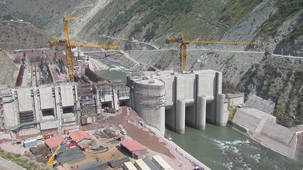
- What Are the Applications of SDA Bolts in Hydropower Stations?
- Time:2025-08-21From:This Site
- Learn how self-drilling anchor bolts enhance slope stability, tunnel support, and dam reinforcement in complex geological conditions at hydropower stations. Optimize hydropower projects with efficient, cost-effective, and eco-friendly solutions.
- View details
-
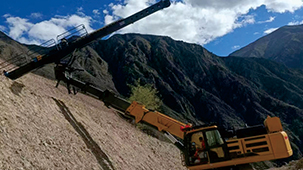
- Slope Stabilization with SDA Bolts: Benefits & Applications
- Time:2025-08-19From:This Site
- Discover how self-drilling anchor bolts (SDA bolts) provide superior slope stabilization for highways, railways, and tunnels. Learn their key benefits, installation process, and real-world applications in loose or collapsible soils.
- View details
-
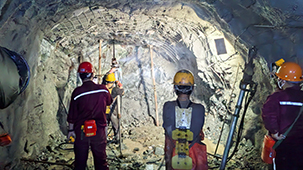
- How Self-Drilling Rock Bolts Enhance Tunnel Support in Fractured Rock?
- Time:2025-08-15From:This Site
- Discover how self-drilling rock bolts enhance tunnel support in fractured rock. Learn their benefits, installation steps, and real-world applications for safe, efficient tunneling.
- View details
-
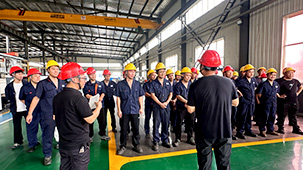
- Sinorock 2025 Quality Month | Strengthening Quality Foundations, Empowering Product Excellence
- Time:2025-08-13From:This Site
- Sinorock’s 2025 Quality Month, themed “Strengthening Quality Foundations, Empowering Product Excellence,” successfully concluded, reinforcing our commitment to superior product quality.
- View details
-
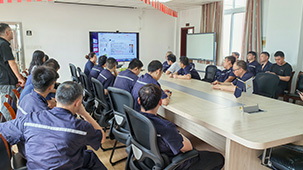
- Sinorock Safety Month 2025 | Everyone Speaks Safety, Everyone Can Respond
- Time:2025-07-03From:This Site
- Sinorock Safety Month 2025, centered on the theme "Everyone Speaks Safety, Everyone Can Respond - Spot Workplace Hazards," has wrapped up successfully!
- View details
-
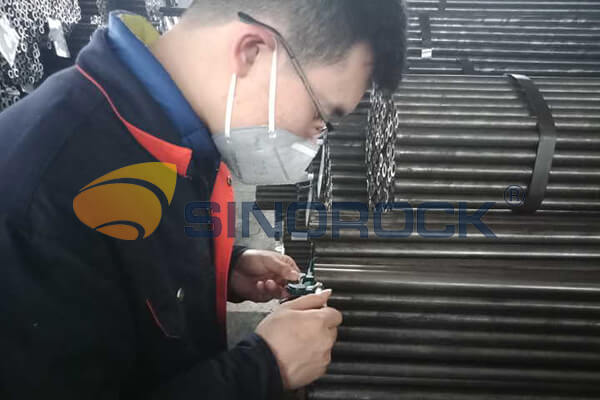
- Quality Control: the Vital Factor of A SDA Bolt Factory
- Time:2025-01-09From:This Site
- Sinorock’s comprehensive quality control system, from supplier management to outgoing inspections, ensuring the highest standards for self-drilling anchor bolts in construction.
- View details
-

- Sinorock Invites You to Explore Proven Self-Drilling Anchor Bolt Solutions at bauma 2025
- Time:2025-03-07From:This Site
- From April 7–13, 2025, explore Sinorock’s Self-drilling anchor bolt solution at Booth C2.513/4 in Hall C2 of the Messe München Exhibition Center (Munich, Germany).
- View details
-
.jpg)
- SINOROCK to Attend EXPOMINA PERÚ 2024 in Lima, Peru
- Time:2024-08-10From:This Site
- Sinorock to Attend EXPOMINA PERÚ 2024 in Lima, Peru
- View details
-
.jpg)
- SINOROCK to Participate in MINING AND METALS CENTRAL ASIA 2024
- Time:2024-08-08From:This Site
- SINOROCK to Participate in MINING AND METALS CENTRAL ASIA 2024
- View details
 Download
Download 


